Old Galway
OUR LADY'S BOYS CLUB (31-05-12)

Our photograph today is of a 1950’s soccer team representing Our Ladys Boys Club, taken in Terryland where facilities were quite primitive at the time and as you can see, the preferred mode of transport apart from shanks mare was cycling. The team is, back row, left to right; Patsy Burke, Richie O’Connor, Brod Long, Brendan Dowling, Paddy Power, Tommy Carr, Paddy Beatty. In front are Danny Collins, Billy Carr, John Rushe, Steve Mannion, Gus O’Connor and Barney Birkett. The Boys club was founded in 1940, a time when there were no after-school recreational facilities for boys in working class areas. The Jesuit community gave them the use of a clubhouse at the back of the Columban Hall and here the boys were involved in many activities and prepared for later life. They were taught self respect, loyalty, how to help others and the importance of team spirit.
A FUNERAL PASSING EYRE SQUARE (24-05-12)

There is something profoundly lonely about this photograph of a funeral procession passing the corner of Eyre Square and Forster Street. It was probably taken during the war when petrol was very scarce. As you can see, the coffin is being carried on a horse drawn cart. It might have been coming from the station but it is more likely it was on its way from St. Patrick’s Church to the New Cemetery. The heavy rain makes the day even more miserable.The pub on the corner was Number 18, Eyre Square and originally opened in 1861. It belonged to Michael J. Lydon who came originally from Knockferry.
LANDING FISH AT BLACKROCK (17-05-12)
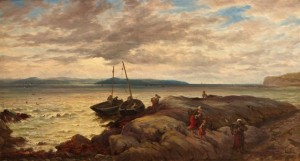
Our image today is of a painting entitled “Morning – Landing Fish at Blackrock, Galway Bay” by an English painter named Thomas Rose Miles dated c. 1895. There is probably a little artistic licence taken but it is a fascinating study of the bay which is very difficult to capture in paint. There is just a thin strip of land visible on the far side, nothing very dramatic, and of course the light and colours change constantly. The sunlit area we see on the Clare coast corresponds to Ballyvaughan and the landmass to the west of that has been darkened for artistic effect. Though they are probably not visible in this reproduction, there are a lot of fishing boats on the bay.
ST. MARY’S COLLEGE, ALMOST 100 YEARS OLD

Our photograph today shows the St. Mary’s College hurling team which won the competition played between their school, Garbally and St. Flannan’s in 1924. The diocesan magazine “The Mantle” published this image and provided an update on the players in 1959, so the notes after their names describe their status in 1959.Back row, left to right; Right Rev. Monsignor J. Mitchell, President of the College; Ben Farrell, a native of Craughwell, ordained a priest for Galway 1932, went to Australia, died in the diocese of Bathurst ; Willie Fahy, Castlegar, now a parish priest in Australia ;
GALWAY MINOR HURLERS, 1965
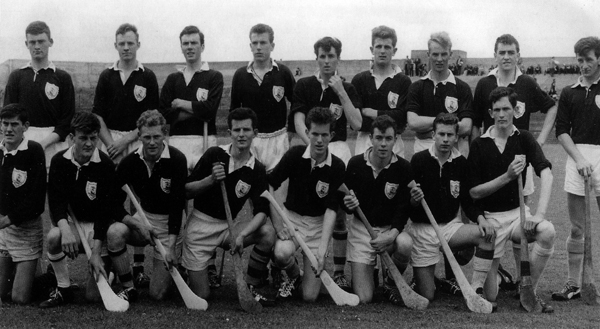
Hurling is more than just a game, it is the most Irish thing we have apart from our language, a national passion which is woven deeply into the social fabric of Irish society, an icon of Irish culture, a game that is played for pride, not money.Séamus King in his excellent book “The History of Hurling” has a reference to the game from Irish verbal history dating back to 1200 BC. Legend has it that both Cúchulain and Fionn MacCumhaill and the Fianna played it. In ancient times, teams representing neighbouring villages involving hundreds of players played matches lasting several hours.
The Augustinians and Forthill
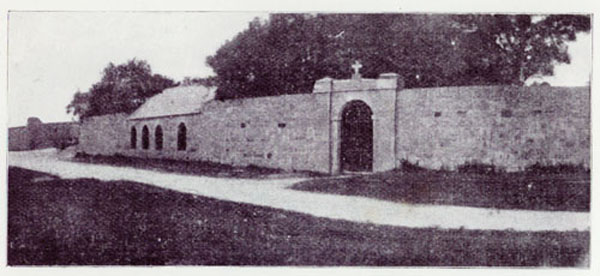
The Augustinians have been associated with Galway since the year 1500. Their first convent, or priory, was built on Fort Hill between 1506 and 1508. Its patroness was Margaret Athy who was the wife of the then mayor, Stephen Lynch. He sailed for Spain in search of a cargo of rich wines, and when he returned, he was astonished to see the graceful outline of a new church, with tower and tapering spire, on the elevated promontory that was Fort Hill. Not one stone of it had been laid when he left the city.In 1551 the churches and cemeteries of the Dominican, the Franciscan, and the Augustinian orders were handed over to the Reformed Collegiate Church by Edward VI, but nevertheless Catholics continued to use Fort Hill until the end of the century.
Galway's Military Museum
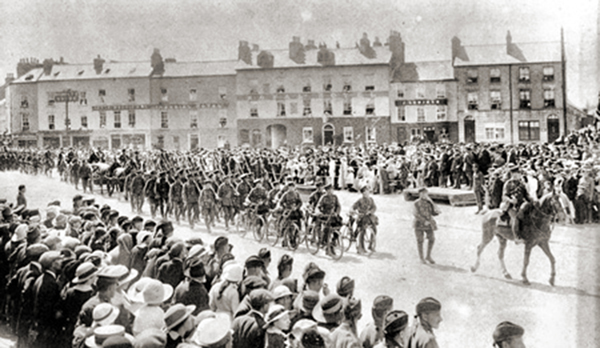
GALWAY’S MILITARY MUSEUM
Our photograph today was taken in Eyre Square in 1922, and shows the Connaught Rangers parading through the city on their last day in Galway. It is interesting to see them on horseback, on foot and with bicycles. As you can see in the foreground, there is a long line of soldiers standing in front of the crowd, and there is what looks like a temporary reviewing stand on the far side of the street.
Galway's Wartime Experience
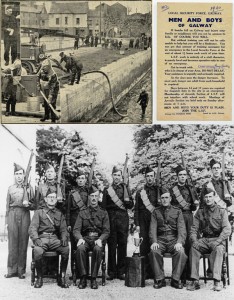
GALWAY’S WARTIME EXPERIENCE
“At 11.15am on the morning of the 3rd of September, 1939, we heard Mr. Chamberlain’s momentous speech declaring war on Germany. Each succeeding hour, the radio announced news. The first major item to be broadcast was that the
.png)